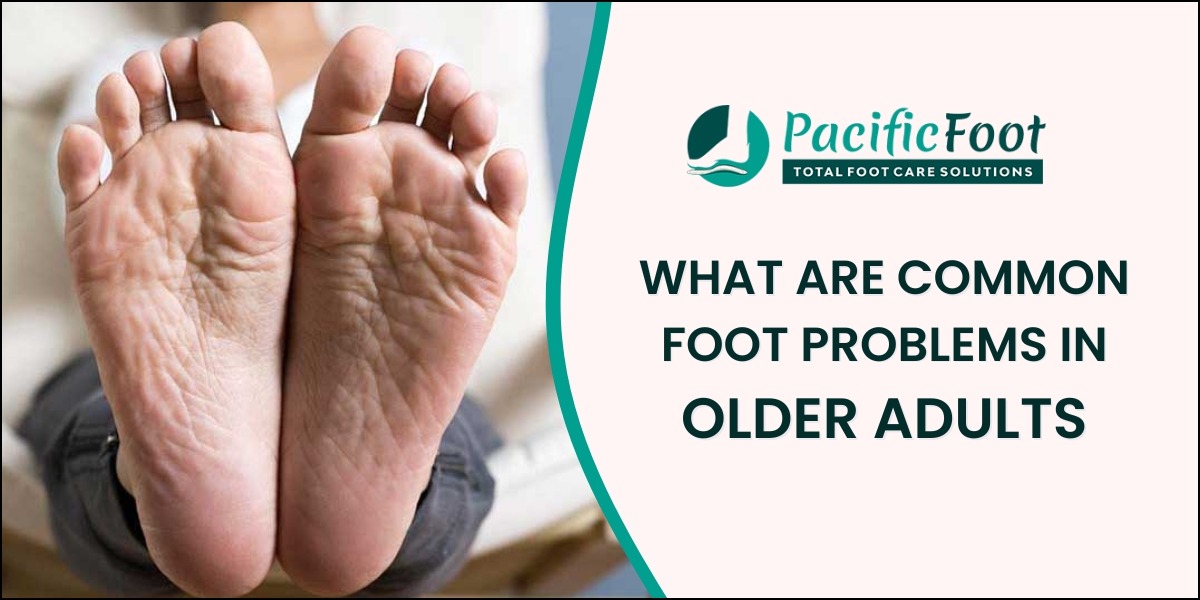Our feet are the foundation of our mobility, faithfully carrying us through life’s journey. Yet, as we age, they often bear the cumulative brunt of decades of use. It’s no surprise that foot problems become increasingly common in our later years. While some changes are a normal part of aging, many foot conditions are treatable, and proactive care can make a world of difference in maintaining an active, pain-free lifestyle.
Frequent foot issues affecting older adults and what you can do about them.
1. Osteoarthritis
Often referred to as “wear-and-tear” arthritis, osteoarthritis is a leading cause of foot and ankle pain in older adults. Over time, the protective cartilage that cushions the ends of your bones wears down. This can lead to pain, stiffness, swelling, and a decreased range of motion in the joints of the foot and ankle. It commonly affects the big toe joint (hallux rigidus), the midfoot, and the ankle.
What helps? Supportive footwear with good cushioning, custom orthotic inserts, low-impact exercises like swimming, and weight management can significantly reduce symptoms.
2. Bunions (Hallux Valgus)
A bunion is a bony bump that forms on the joint at the base of your big toe. It develops when some of the bones in the front of your foot move out of place, causing the tip of your big toe to get pulled toward the smaller toes. This forces the joint at the base to stick out. Bunions can be painful, especially when wearing narrow shoes, and can lead to redness, swelling, and corns.
What helps? Wearing wide, comfortable shoes with a deep toe box is crucial. Bunion pads, toe spacers, and custom orthotics from a foot clinic can help redistribute pressure and slow progression.
3. Plantar Fasciitis
This condition involves inflammation of the plantar fascia—a thick band of tissue that runs across the bottom of your foot and connects your heel bone to your toes. It’s one of the most common causes of heel pain. The classic symptom is a stabbing pain near the heel, which is often most intense with your first few steps in the morning.
What helps? Regular stretching of the calf muscles and plantar fascia, wearing supportive shoes (even indoors), and using arch support insoles can provide substantial relief.
4. Hammertoes
This deformity causes your toe to bend or curl downward instead of pointing forward. It typically affects the second, third, or fourth toe. Hammertoes often form due to an imbalance in the muscles, tendons, or ligaments that normally hold the toe straight, frequently exacerbated by wearing ill-fitting shoes. The bent toe can rub against your shoe, leading to painful corns and calluses.
What helps? Proper footwear is key. Toe exercises, non-medicated corn pads, and protective sleeves can help. In more severe cases, splinting or surgery may be considered.
5. Diabetic Foot Complications
For older adults with diabetes, foot care is not just about comfort—it’s essential for health. Diabetes can cause nerve damage (peripheral neuropathy), leading to numbness, tingling, or a loss of sensation in the feet. It can also impair blood flow, making it harder for sores or cuts to heal. A small, unnoticed blister can quickly become a serious infection or ulcer.
What helps? Daily foot inspections, meticulous hygiene, moisture control, and always wearing protective footwear are vital. Regular check-ups with a foot care specialist are non-negotiable for diabetic foot health.
Taking the Next Step Toward Healthier Feet
Don’t accept foot pain as an inevitable part of aging. Many of these conditions can be managed effectively with the right care. Investing in well-fitting, supportive shoes, maintaining a healthy weight, and performing simple foot stretches daily are excellent preventive measures. However, for persistent pain or deformities, seeking professional advice is crucial.
If you are in the Pimpri Chinchwad, Pune and seeking expert care for foot discomfort, consider visiting the Pacific Foot Insole Clinic. Specializing in comprehensive foot care solutions, their team of specialists provides advanced biomechanical assessments and creates custom orthotics in Pimpri Chinchwad to your unique foot structure. Whether you’re managing diabetic foot care, arthritis, plantar fasciitis, or simply seeking preventive advice to enhance your mobility, the clinic is dedicated to helping you step back into comfort and an active life with personalized, effective treatment plans.
FAQs on Foot Problems in Older Adults
1. What causes foot pain in the elderly?
Common causes include osteoarthritis, plantar fasciitis, poor circulation, and wearing unsupportive footwear.
2. How can seniors improve their foot health?
Seniors can improve foot health by wearing proper shoes, washing and inspecting feet daily, moisturizing, and doing simple foot and ankle stretches.
3. Why do older adults’ feet swell?
Swelling can be caused by prolonged sitting or standing, venous insufficiency, certain medications, or underlying health conditions like heart or kidney disease.
4. What are the best shoes for elderly foot problems?
The best shoes have a wide toe box, firm heel support, good arch support, a non-slip sole, and are easy to fasten.
5. When should an elderly person see a doctor for foot pain?
See a doctor if there is persistent pain, any sign of infection (redness, warmth, swelling), an open sore that isn’t healing, or a sudden change in the shape or color of the foot.

